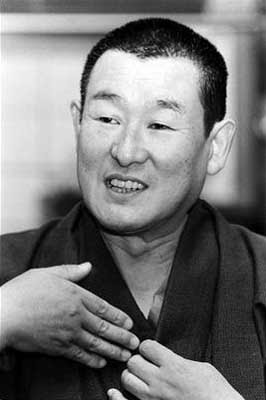COLLECTIONS
Les Abattoirs, Musée d’Art Moderne et Contemporain, Toulouse et Midi-Pyrénées Aichi Prefectural Museum of Art, Nagoya / Amagasaki Cultural Center, Amagasaki / Aomori Museum of Art, Aomori / Asago Art Village, Asago / Ashiya City Museum of Art and History, Ashiya / Bridgestone Museum of Art, Tokyo / Centre Régional d’Art Contemporain Midi-Pyrénées, Labège Chiba City Museum of Art, Chiba / Dallas Museum of Art, Dallas / Enryakuji Kaikan, Ōtsu / Fukuyama Museum of Art, Fukuyama / Hara Museum of Contemporary Art, Tokyo / Himeji City Museum of Art, Himeji / Hiroshima City Museum of Art, Hiroshima / Honkōji Temple, Amagasaki / Hyogo Prefectural Museum of Modern Art, Kobe / Iwaki City Art Museum, Iwaki / The Kagawa Museum, Takamatsu / Kisoji Art Museum, Agematsu / Kita Modern Art Museum, Nara / Kitakyushu Municipal Museum of Art, Kitakyushu / Komagata Jūkichi Museum of Art, Nagaoka / Kōsetsuin Temple, Kyoto / Kure Municipal Museum of Art, Kure / Meguro Museum of Art, Tokyo / Mie Prefectural Art Museum, Tsu / The Miyagi Museum of Art, Sendai / Musée Cantini, Marseille / Musée National d'Art Moderne, Centre Georges Pompidou, Paris / Museum and Archives, Kyoto Institute of Technology, Kyoto / Museum of Contemporary Art, Tokyo / The Museum of Art Ehime, Matsuyama / Museum of Fine Arts, Gifu / The Museum of Art, Ibaraki / The Museum of Art, Kochi / The Museum of Modern Art, Saitama / The Museum of Modern Art, Shiga / The Museum of Modern Art, Toyoama / The Museum of Modern Art, Wakayama / Nara Prefectural Museum of Art, Nara / The National Museum of Art, Osaka / The National Museum of Modern Art, Kyoto / The National Museum of Modern Art, Tokyo / Nerima Art Museum, Tokyo / Niigata Prefectural Museum of Modern Art/The Niigata Bandaijima Art Museum, Nagaoka / The Office of Tendaishū, Otsu / Ohara Museum of Art, Kurashiki / Oita Museum of Art, Oita / Osaka City Museum of Modern Art, Osaka / Otani Memorial Art Museum, Nishinomiya / Shizuoka Prefectural Museum of Art, Shizuoka / Takamatsu City Museum of Art, Takamatsu / Tanabe City Museum of Art, Matsue / Tochigi Prefectural Museum of Fine Arts, Utsunomiya / Tokyo Municipal Museum of Art, Tokyo / Tokyo Opera City Art Gallery, Tokyo / Walker Art Center, Minneapolis / The Warehouse, Dallas / Yokohama Museum of Art, Yokohama / Yokosuka Museum of Art, Yokosuka /



























